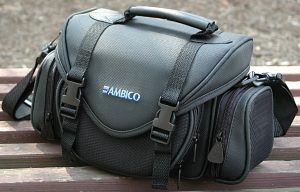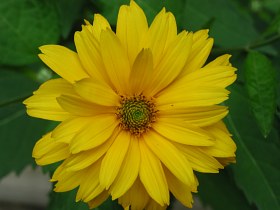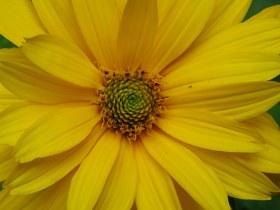
|
Olympus C-30x0Z Recommended accessories |

| My other pages related to the Olympus C-30x0 cameras |
|
So you've got your Olympus C-30x0Z out of the box, used it for a few days, and now you would like to spend some more money to make the camera more usable and more fun to play with? If yes, this short article is written for you. This is a tricky subject, as everyone's needs and taste may be different. Still, I'll try to list various accessories you may consider for your C-3040Z or C-3020Z (or the older C-3000/3030 models), sharing my finds and experience on a few. Extra SmartMedia storage The card coming with your camera is way too small. Get a 128 MB (3.3V) SmartMedia card - or, better, two. Expect to pay $100 or so; less on the 'Net (December '01). PCMCIA card adapter This is useful if your computer has a PCMCIA Type II (or III) slot, and if you use one of the older camera models: the C-3000Z or C-3030Z. You slide the CF card into a slot in the PCMCIA one, then put the whole shebang in your computer's slot, and the CF pretends it's another disk drive attached to your machine. If you use a C-3020Z or C-3040Z, which have USB storage-class connectivity, transferring the images via the included USB cable seems to be a better option. With newer Windows (from 98SE on) you don't even need any drivers: just plug the cable in and Windows will see the camera as yet another disk drive. Lens adapter tube As I said in the 30x0 review, the collapsible lens may need some protection. This is provided by the optional CLA-1 lens adapter from Olympus. The adapter is a millimeter or so too short to accommodate the extended lens when the lens cap is on. It has a 43 mm thread on the outside end, and all Olympus accessories (wide-angle, tele and macro attachments) are intended to be used with an additional step-up ring. Attaching a 43-46 mm ring will allow you to add a protective UV or skylight filter, plus the cap. (You may opt for a 43-49, or larger, step-up ring in order to reuse your older filters and accessories, but the lens looks then a little funny, like a small mushroom.) If you do not want to use the step-up ring (obligatory with the CLA-1), you may get a conical adapter made by Tiffen, provided with a 49 mm thread. This is a highly personal choice. Usually I stick to Tenba bags (the best money can buy, at least for reasonable money), but this time, surprisingly, I found a small bag by Ambico (model V-4400) looking like a scaled-down version of an SLR system bag.
The bag is just cute. The external dimensions are 11x6.5x5.5 inches, internal — 7x4.5x3.5 in. The last value perfectly fits the height of the camera, stored on its side with its back against one of the ends of the bag.
| Made of waterproof nylon, it has padded sides and an overlapping rainproof flap (not a zipper!), one front and two end pockets, plus a mesh pocket inside the top. The sides are quite rigid, so the bag keeps its shape even if not fully loaded. It is well made, and inexpensive: I paid $20 at my local Best Buy store.
| 
|
The internal dividers allow you to create a small cradle (I had to bend one in half, cutting off some of the Velcro), accommodating the camera with the lens adapter, and leaving an extra compartment (or two, if you find an additional Velcro divider). One of these compartments holds my film-based backup camera, an Olympus Stylus Epic.
I've used the V-4400 when some hiking in rocky terrain under quite adverse weather conditions. The bag survived nicely, except for some cosmetic damage to the (ornamental) mesh on end pockets which was exposed to raw granite quite a lot. The camera was always dry and secure, surviving a number of drops. The bag passed the exam nicely. Tripod I found myself using the tiny Slik 450G a lot. When folded, it is just 30 cm (1 ft) long, including the panoramic head; fully extended it rises to about 90 cm (3 ft). Most importantly, it weighs just about a pound. True, it is not much of a tripod at this size and weight, but much better than nothing: try to carry anything larger on a hike. (Well, I keep my old Slik U212 in my trunk, just in case.) NiMH batteries and charger An absolute must. Get batteries (three sets, four batteries each) with as high capacity as possible, and a good, smart charger/conditioner. Maha C204F is an excellent choice here. It will accept two or four AA (or AAA) batteries, charges them in less than 3 hours, has a trickle charge mode which allows you to keep batteries in the charger indefinitely, and provides the circuitry to condition batteries (which may be especially useful for your older NiCads). Highly recommended Web source: Thomas Distributing, where you will also find knowledgeable answers to many of your battery-related questions. Close-up attachments These, attached to the front of the lens (or rather, lens adapter), allow you to get closer to the subject and to get greater magnifications. Unwilling to go for the pricey (and fairly large) Olympus macro attachment, I'm using a set of Hoya multicoated, single-element lenses: +1, +2, and +4, in the 46 mm size. Of these, the last one is really useful, allowing me to get the distance down to 12 cm (from the lens front), and the coverage — to 48x36 mm, down from 80x60 mm without the attachment.
|
| 
Without the close-up attachment, from the minimum distance at which the camera will still focus, at F=96 mm(eq). Overcast sky, late morning. Exposure: 1/30s, F/11.
| 
With the +4 attachment, from the new minimum focusing distance, all other conditions unchanged.
|
| 
One of the few plants in my patio I wasn't able to kill this year. Late afternoon, overcast sky, 1/15s, F/11. This is the tightest frame I could get at the 96 mm setting.
| 
Much better: with the +4 attachment I was able to remove most of the irrelevant background. The picture could use a better composition; this is just for comparison sake.
I bought my set at $50 (way too expensive!) from B&H Photo; they must have had just one, as now they list the item as out of stock. Try The Filter Connection.
| The same manufacturer also makes a stronger (+10), achromatic attachment (consisting of two lenses), but it seems to be available only in 49 mm and larger sizes, and I have yet to try it out. Filters Although some purists don't like an idea of putting yet another piece of glass into the light path, I would recommend an UV (or skylight) filter to improve color balance, protect the lens surface from dirt and scratches, and, according to some unconfirmed rumors, to protect the color-filter mosaic in the CCD. I have chosen the filter size at 46 mm: 43 mm may lead to some lens vignetting (and a 43-43 mm extension ring may be hard to find unless you buy a 43 mm filter and remove the glass), while 49 mm is too large for my taste. Another filter you may want to use is a polarizer (linear or circular), to darken the blue sky and restore saturation in colors washed out by scattered sky light. I also use red and infrared filters (see my infrared photography page). AC power supply Unless you use the slow serial connection to upload images to your camera, I consider the AC power supply a waste of money. Yes, I bought mine from Olympus for $70, and the stupid thing even does not accept dual voltage. Having an extra set of NiMH batteries ready in the charger is cheaper and less cumbersome. If you really have to have an AC adapter, consider a third-party one. They are cheaper and work just as well. Make sure your choice is compatible with the camera. BugEye Digital lists a model for the C-30x0Z. | |||||||

| My other pages related to the Olympus C-30x0 cameras |
| Home: wrotniak.net | Search this site | Change font size |
| Posted 2000/06/29; last updated 2002/06/15 | Copyright © 2000-2002 by J. Andrzej Wrotniak |